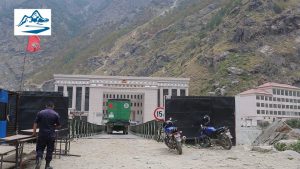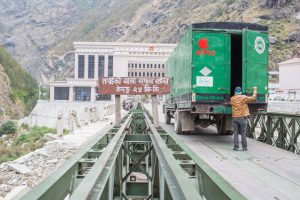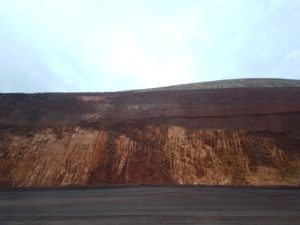In March, a regional court gave sweeping powers to protect rivers in India after granting them status as living entities. In response, central and state governments have pushed back, saying the order is impossible to implement. The initial reaction of the Uttarakhand government – whose officers had been made legal guardians of the river – was quite positive, and coverage of the judgment largely looked at it as a positive step. Unfortunately, the problems with the initial judgment, delivered on March 20, 2017, and its follow-on directions, delivered ten days later, were clearly manifest in the orders themselves.
As thethirdpole.net reported on the first order, the parens patrie legal clause under which the Uttarakhand High Court had made officials of Uttarakhand legal guardians automatically entitled them to be sued for actions of the body that they were legal guardians of. It also made them legal guardians of rivers that flowed through other states, and even across the border of India. In its Special Leave Petition (SLP) to the Supreme Court the Uttarakhand government now argues these very points, suggesting that these points make the order “legally untenable”.
In India SLPs are not public documents, and their contents are not released until the case is decided, but officials of the Uttarakhand government have spoken to the press about the case. The Indian Express quotes the SLP as saying, “If there arises any dispute (due to) illegalities being committed in other states, then the Chief Secretary cannot pass any instruction against any other states or Union of India… therefore, the state of Uttarakhand cannot declare the river Ganga and Yamuna as a legal person, or living entity.”
It also quotes the advocate-general of Uttarakhand, S.N. Babulkar, one of the officers that the judgment had made legal guardian, as saying, that the rivers given legal rights – the Ganga and Yamuna – are holy rivers in which people bathe. “Can I or the chief secretary ask for people to stop bathing in the Ganga?” he asked.
The March 20 judgment had cited the sacred nature of the rivers as one of the key arguments to declare them legal entities, but the judgment ran the danger of making the same sacred practices illegal.
Disputes with other states were also cited in the SLP. According to the Hindustan Times, the SLP stated, “As per the provisions under item no. 56 of the union list of the 7th Schedule (Article 246) of the Constitution, it is the sole constituent right of the Union Government to frame out the rule for efficacious management of all the inter-state rivers.” The Central government had already filed a petition in May, to which Uttarakhand was a party, along the same lines. Nevertheless Madan Kaushik, a minister of the Uttarakhand government and spokesperson for the government, welcomed the judgment giving legal status to the rivers.
It is worth remembering that the status given to the rivers came about from a Public Interest Litigation (PIL) filed by Mohammad Salim, a resident of Haridwar, about the high levels of pollution, encroachments, mining and stone crushing on the riverbed of the Ganga and along its banks. The High Court had given legal status as a way to save the rivers from such harm. On December 5, 2016 the Uttarakhand High Court had prohibited mining in the Ganga riverbed. In response the state government had filed an SLP, and in May 2017 the Supreme Court had stayed the order.
This suggests two things: firstly, given that the logic of the cases is similar, the Supreme Court may stay this order as well. Secondly, while the Uttarakhand government officially welcomed the step of the rivers being given a legal status, they explicitly opposed the reason why it had been done by the Uttarakhand High Court – which was to preserve the ecosystem within which the rivers had flourished, but which are now being threatened.
It was in the March 30, 2017 judgment that the Uttarakhand High court had tried to develop a more holistic view of why and how preserving the ecosystem was necessary and how global norms were moving towards giving rights to nature. As we had argued then, the judgment ignored many issues, and was far too broad to be legally precise, or operationally implementable. For example, it stated, “Plucking of one leaf, grass blade also damages the environment universally.”
Nevertheless the crisis of Indian rivers, and that of the larger ecosystem within which they exist, is a very real one. Recent analysis suggests that 94% of all rivers in India are either critically polluted or have critically low water flows due to dams, or both. As long as this crisis remains the number of cases and judgments on such matters is likely to increase rather than decrease. The case law on this important subject is just getting started. Watch this space.
![<p>If the Ganga has the legal rights of a person, should people be allowed to bathe in it? [image by: Eric Parker]</p>](https://dialogue.earth/content/uploads/2017/07/Ganga-bathing-Eric-Parker.jpg)






![A newly built water tank on top of the Srinagar Hill in Palpa, western Nepal [image by: Abhaya Raj Joshi]](https://dialogue.earth/content/uploads/2017/07/water-tank-in-Srinagar-300x172.jpg)

